Home » Machine Learning and Data Science with Python
Machine Learning and Data Science with Python
Machine Learning and Data Science have revolutionized the way we process, analyze, and interpret data. By leveraging algorithms and statistical models, you can make data-driven decisions and predictions. Python, with its simplicity and extensive libraries, is a leading language for these disciplines.
This course is tailored to make you a highly skilled Data Scientist with extensive knowledge of Python, Python Libraries and ML Algorithms.


Our Placements
Our Students Who Have landed Their Dream job In














Sessions
28 Lectures
Duration
55 Hrs
Placement
100% Assurance*
Job CTC
Upto 8 LPA*
Sessions
28 Lectures
Duration
55 Hrs
Placement
100% Assurance*
Job CTC
Upto 8 LPA*
LAND YOUR DREAM JOB
Transform industries as a Data Scientist at AI-driven companies like DeepMind
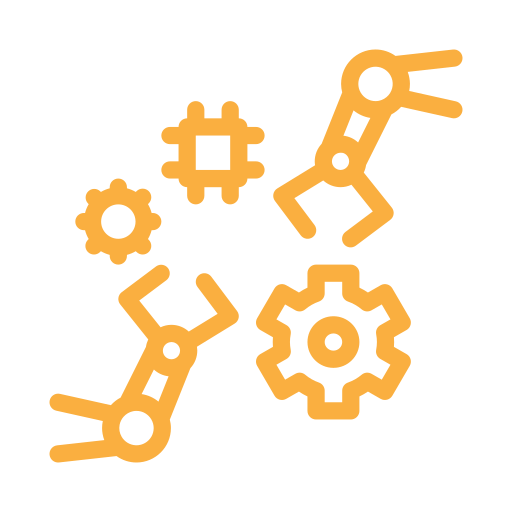
Innovate as a Machine Learning Engineer at tech pioneers like OpenAI

Advance the frontier as an AI Research Scientist with research labs and universities

Drive decision-making as a Data Analyst at market leaders like Netflix
Make You Industry-Ready
EXCLUSIVE CAREER
Why Join Us?
Hands-On Training
Experience our interactive, hands-on teaching approach through a free course demo.
Industry-Leading Mentors
Learn from seasoned professionals who have pioneered advancements in their industries.
Job Readiness
Receive personalized career guidance and placement assistance.
Tools and technologies


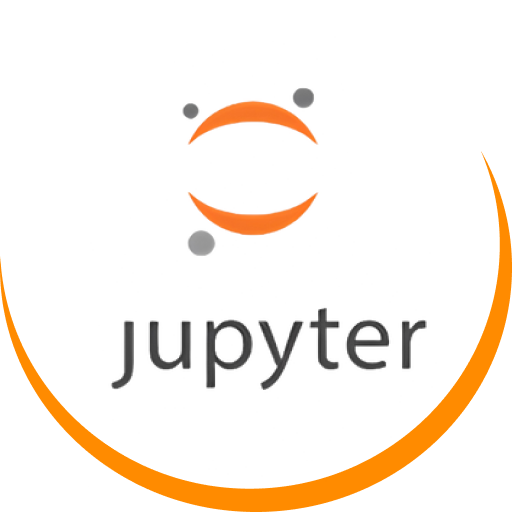



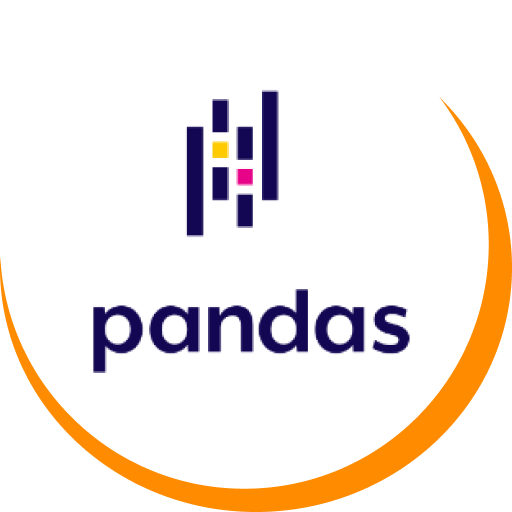
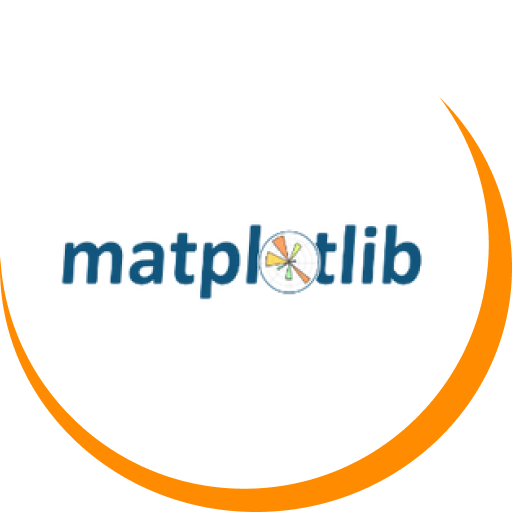

Expert-Designed Course Structure
Hands-on training with real-world projects.
Gain practical experience by working on industry-relevant projects under expert guidance.
Training From Industry Leading Mentors
Learn from seasoned professionals who have pioneered advancements in their respective fields.
Career guidance and placement assistance.
Receive personalized support to sharpen your job search skills and secure rewarding opportunities.
Flexible learning option
Choose from online or on-premise training modes to suit your preferences and lifestyle.
1:1 Live Sessions
Live one-on-one training assistants via video call, chat and on-site with problem and solution guidance.
Comprehensive Curriculum
Master a wide range of concepts and techniques through a meticulously designed and up-to-date curriculum.
What You'll Learn
1
Data Preprocessing
- Learn how to clean and prepare data for analysis.
2
Exploratory Data Analysis
- Discover patterns and trends within your data.
3
Supervised Learning
- Understand algorithms like linear regression and decision trees.
4
Unsupervised Learning
- Explore clustering and dimensionality reduction techniques.
5
Model Evaluation
- Learn how to assess the performance of your models.
6
Advanced Topics
- Delve into neural networks, natural language processing, and more.
Why Python?
Python is the preferred language for Machine Learning and Data Science for several reasons:
Ease of Use
Python’s syntax is simple and readable, making it accessible for beginners.
Extensive Libraries
Libraries like NumPy, pandas, scikit-learn, and TensorFlow provide powerful tools for data manipulation and machine learning.
Community Support
A vibrant community of developers and data scientists continuously contributes to Python’s ecosystem.
OUR CURRICULUM
Our Interactive Course Content
Topics covered
Python Programming
1. Introduction to Python Programming
- What Is Python?
- Benefits of Learning Python Programming Compared to Other Programming Languages?
- Interpreted vs compiled
- Dynamic programming
- Scripted vs GUI vs Interactive mode
2. Installation & Environment Settings of Python IDE
- Installation of Anaconda
- Installation of PyCharm
- Installation of VS Code
- How to use VS Code, Jupyter & PyCharm.
- How to use google Collab and it’s benefits
3. Python Basics
- Variables
- Datatypes
- Operators
4. Python Numbers
- Integer
- Float
- complex
5. Python String
- String Slicing
- Iterating Over String
6. Python Container Objects
- List
- Tuple
- Dictionary
- Sets
7. Conditions & Looping
- If Condition
- EIif Condition
- Else Condition
- While Loop
- For Loop
- Break & Continue Statement
8. Unpacking
- List Unpacking
- Tuple Unpacking
- Dictionary Unpacking
9. Comprehensions
- List Comprehension
- Dictionary Comprehension
10. Functions
- Basic Functions
- Lambda Functions/Expression
- Map() Function/Expression
11. Python Programming
- Palindrome, Fibonacci, factorial
- Prime number, divisibility test, count of substring
12. Object Oriented Programming (Classes & Objects)
- Inheritance
- Encapsulation
- Polymorphism
- Abstraction
13. Exception Handling
Python Libraries for ML
1. NUMPY
- Introduction to NumPy
- NumPy Array
- Array Attributes
- Array Methods
2. PANDAS
- Introduction to Pandas
- Pandas Series
- Accessing Series Elements
- Pandas Data frame – Introduction
- Data frame Creation
- Reading Data from Various Files
- Accessing Data frame
- Data frame Sorting
- Data frame Concatenation
- Data frame Joins
- Data frame Merge
- Reshaping Data frame
- Data frame Operations
- Data frame methods - head(),tail, dType, shape, get_dummies
- Checking Duplicates
- Dropping Rows and Columns
- Replacing Values
- Missing Value Analysis & Treatment
3. VISUALIZATION USING MATPLOTLIB
- Plot Styles & Settings
- Line Plot
- Multiline Plot
- Matplotlib
- Subplots
- Histogram
- Boxplot
- Pie Chart
- Scatter Plot
4. VISUALIZATION USING SEABORN
- Strip plot
- Distribution plot
- Joint plot
- Violin plot
- Swarm plot
- Pair plot
- Count plot
- Heatmap
Machine Learning Algorithms
1. Machine Learning Introduction
- What is DS/ AI/ Ml with examples
- ML Types
- Algorithm vs model
- Using Google colab
2. Supervised Learning
- Linear Regression with ordinary Least Square (OLS)
- Optimization Technique
- Linear Regression with Stochastic Gradient Descent (SGD)
- Logistic Regression
- Metrics for regression and classification
Land your Dream Jobs
In Companies Like

Experience the CDPL
Training Approach
| Video Courses | Bootcamps | CDPL | |
|---|---|---|---|
| Real work experience | ✖ | ✖ | ✔ |
| True, project-based learning | ✖ | ✖ | ✔ |
| Live sessions & mentorship | ✖ | ✔ | ✔ |
| Job-ready portfolio | ✖ | ✖ | ✔ |
| Externship with top companies | ✖ | ✖ | ✔ |
| Career guidance | ✖ | ✔ | ✔ |
| Placement Assurance | ✖ | ✖ | ✔ |
Eligibility
Undergraduates
This course is structured for any undergraduate or job seeker who wants to start his career in Data Science & Machine Learning field.
Graduates
Any Fresh graduate or post-graduate looking to secure a career in the IT domain.
Professionals
Any working professional with experience in the non-IT domain and looking to enter the IT field.
Our Process
LIVE Learning
Experience Immersive Learning Through Our Live Classrooms

Onboarding Session
Kick-start Your Learning Journey with Our On-boarding Session
Certification & Placement Support
Certification to Career: Let Us Guide Your Path to Success
LIVE Learning
Experience Immersive Learning Through Our Live Classrooms
Onboarding Session
Kick-start Your Learning Journey with Our On-boarding Session
Certification & Placement Support
Certification to Career: Let Us Guide Your Path to Success
Embark on your Machine Learning and Data Science journey with Python today!
Whether you’re a complete beginner or an experienced practitioner, our guide provides the knowledge and resources you need to succeed.
- Get free demo session
- Online Sessions
- Hands on session
- Placement Assurance*

- Get free demo session
- Online Sessions
- Hands on session
- Placement Assurance*
Some figures that matters
Learners
Years of Industry Experience
Corporate Clients
FAQ: Machine learning and data science with Python
Can I do data science and machine learning together?
Absolutely! Data science and machine learning are highly complementary fields, and many professionals choose to pursue expertise in both simultaneously. In fact, proficiency in both areas can greatly enhance your capabilities and career opportunities in the field of artificial intelligence and data-driven decision-making.
Here's why combining data science and machine learning is beneficial:
- Synergy: Data science and machine learning are closely related disciplines that often overlap in terms of techniques, tools, and methodologies. Data science encompasses a broader set of skills including data acquisition, data cleaning, exploratory data analysis, and statistical modeling, while machine learning focuses on algorithms that enable computers to learn from data and make predictions or decisions. By mastering both areas, you can leverage the strengths of each to solve complex problems and extract meaningful insights from data.
- End-to-End Solutions: Proficiency in both data science and machine learning allows you to develop end-to-end solutions for real-world problems. You can collect and preprocess data, perform feature engineering and selection, build predictive models using machine learning algorithms, evaluate model performance, and deploy the models into production environments.
- Versatility: Having skills in both data science and machine learning makes you a versatile professional who can adapt to a wide range of projects and roles. Whether you're working on predictive analytics, natural language processing, computer vision, recommender systems, or other machine learning applications, a solid foundation in data science principles and techniques will enable you to approach problems with a holistic perspective.
- Career Advancement: Professionals who possess expertise in both data science and machine learning are in high demand across various industries, including technology, finance, healthcare, e-commerce, and more. They are often sought after for roles such as data scientist, machine learning engineer, AI researcher, and business analyst, among others. Additionally, individuals with interdisciplinary skills tend to command higher salaries and have greater opportunities for career advancement.
If you're interested in pursuing data science and machine learning together, you can start by acquiring foundational knowledge in statistics, mathematics, programming (e.g., Python, R), and data manipulation and visualization techniques. From there, you can explore more advanced topics such as machine learning algorithms, deep learning, reinforcement learning, and big data technologies. Online courses, textbooks, tutorials, and hands-on projects are excellent resources for gaining practical experience and building a strong skill set in both areas.
Can I study machine learning with Python?
Absolutely! Python is one of the most popular programming languages for machine learning due to its simplicity, versatility, and extensive ecosystem of libraries and tools specifically designed for data science and machine learning tasks. Here's why studying machine learning with Python is a great choice:
- Rich Ecosystem: Python offers a rich ecosystem of libraries and frameworks tailored for machine learning, such as TensorFlow, PyTorch, scikit-learn, Keras, and more. These libraries provide implementations of various machine learning algorithms, tools for data preprocessing, feature engineering, model evaluation, and visualization, making it easier for beginners to get started with machine learning projects.
- Ease of Learning: Python is known for its simple and easy-to-understand syntax, making it accessible to beginners and experienced programmers alike. Its readability and expressiveness allow you to focus more on understanding machine learning concepts and algorithms rather than grappling with complex syntax or language quirks.
- Community Support: Python has a large and active community of developers, data scientists, and machine learning enthusiasts who contribute to open-source projects, share knowledge, and provide support through forums, mailing lists, and online communities. This vibrant community ensures that you have access to a wealth of resources, tutorials, and learning materials to accelerate your learning journey.
- Integration with Data Science Tools: Python seamlessly integrates with popular data science tools and environments such as Jupyter Notebooks, pandas, NumPy, matplotlib, and seaborn, enabling you to perform data analysis, visualization, and experimentation in a cohesive workflow. This integration fosters a smooth transition between data preprocessing, exploratory data analysis, model development, and deployment phases of a machine learning project.
- Industry Adoption: Python is widely adopted across industries for machine learning and data science applications. Many tech companies, startups, research institutions, and enterprises use Python for developing cutting-edge machine learning solutions in areas such as natural language processing, computer vision, predictive analytics, recommendation systems, and more.
Whether you're a beginner or an experienced programmer, studying machine learning with Python provides you with a powerful and flexible toolkit to explore the fascinating world of artificial intelligence and build intelligent applications that can learn from data. With the right resources, dedication, and practice, you can master machine learning with Python and embark on a rewarding career in this rapidly growing field.
Can I become data scientist with Python?
Yes, you can definitely become a data scientist with Python! In fact, Python is one of the most popular programming languages used in the field of data science due to its simplicity, versatility, and extensive ecosystem of libraries and tools tailored for data analysis, machine learning, and visualization. Here's how Python can help you become a successful data scientist:
- Data Analysis: Python offers powerful libraries such as pandas, NumPy, and SciPy that make data manipulation, exploration, and analysis tasks efficient and straightforward. These libraries provide convenient data structures and functions for handling structured and unstructured data, performing statistical analysis, and extracting valuable insights from datasets.
- Machine Learning: Python is widely used for developing machine learning models and algorithms, thanks to libraries such as scikit-learn, TensorFlow, and PyTorch. These libraries provide implementations of various machine learning algorithms, tools for model training, evaluation, and tuning, as well as support for building deep learning models for tasks like image recognition, natural language processing, and more.
- Visualization: Python's visualization libraries, such as matplotlib, seaborn, and Plotly, enable you to create insightful and informative visualizations to communicate your findings effectively. Whether you need to create simple plots, interactive dashboards, or complex visualizations, Python provides the tools to visualize your data and share your insights with stakeholders.
- Flexibility and Integration: Python seamlessly integrates with other data science tools and environments such as Jupyter Notebooks, Anaconda, and Apache Spark, allowing you to work with large datasets, collaborate with colleagues, and deploy your models in production environments. Its flexibility and compatibility with various platforms make it an ideal choice for data science projects across different domains and industries.
- Community and Resources: Python has a large and active community of data scientists, developers, researchers, and educators who contribute to open-source projects, share knowledge, and provide support through forums, tutorials, and online communities. This vibrant community ensures that you have access to a wealth of resources, learning materials, and best practices to advance your skills and stay updated with the latest trends in data science.
By mastering Python and its associated libraries and tools, you can acquire the essential skills and knowledge needed to excel as a data scientist. Whether you're analyzing data, building predictive models, or visualizing insights, Python provides a robust and flexible platform to unleash your creativity and drive innovation in the field of data science.
Is Python the future of ML?
Python has emerged as one of the primary languages for machine learning (ML) and is likely to continue playing a significant role in the future of ML for several reasons:
- Extensive Ecosystem: Python boasts a vast ecosystem of libraries and frameworks specifically designed for ML and data science, such as TensorFlow, PyTorch, scikit-learn, Keras, and more. These libraries offer powerful tools for building, training, and deploying machine learning models, making Python a preferred choice for ML practitioners.
- Ease of Use: Python is known for its simplicity, readability, and ease of learning, making it accessible to beginners and experienced programmers alike. Its straightforward syntax and large community of developers contribute to its popularity among data scientists and ML engineers, who can quickly prototype and experiment with algorithms and models.
- Community Support: Python has a vibrant and active community of developers, researchers, educators, and enthusiasts who contribute to open-source projects, share knowledge, and provide support through forums, tutorials, and online communities. This collaborative ecosystem fosters innovation, accelerates learning, and drives advancements in ML research and applications.
- Integration with Data Science Tools: Python seamlessly integrates with popular data science tools and environments such as Jupyter Notebooks, pandas, NumPy, matplotlib, and seaborn, enabling end-to-end data analysis, visualization, and modeling workflows. Its compatibility with these tools facilitates a smooth transition between data preprocessing, exploratory data analysis, model development, and deployment phases of ML projects.
- Industry Adoption: Python is widely adopted across industries for ML and data science applications. Many tech companies, startups, research institutions, and enterprises leverage Python for developing AI-driven solutions in areas such as natural language processing, computer vision, recommendation systems, autonomous vehicles, and more. Its versatility and scalability make it suitable for tackling diverse and complex challenges in real-world scenarios.
While Python's dominance in the field of ML is evident, it's important to note that the landscape of programming languages and technologies is continually evolving. Other languages such as R, Julia, and Scala also have their niches in the ML ecosystem, and new languages and frameworks may emerge in the future. However, given Python's current momentum, extensive community support, and rich ecosystem, it's likely to remain a prominent choice for ML practitioners and continue shaping the future of machine learning for years to come.
Which is better AI ML or data science?
Comparing the fields of AI (Artificial Intelligence), ML (Machine Learning), and data science is akin to comparing apples, oranges, and bananas—they're related but serve different purposes and have distinct areas of focus. However, each field contributes to advancing technology and solving complex problems in unique ways. Here's a breakdown of each:
- Data Science: Data science involves extracting insights and knowledge from structured and unstructured data using various techniques such as data analysis, statistical modeling, machine learning, and data visualization. Data scientists work with large datasets to uncover patterns, trends, and correlations that can inform business decisions, optimize processes, and drive innovation across industries.
- Machine Learning (ML): Machine learning is a subset of AI that focuses on developing algorithms and models that enable computers to learn from data and make predictions or decisions without being explicitly programmed. ML techniques include supervised learning, unsupervised learning, and reinforcement learning, among others. ML algorithms are used in a wide range of applications such as image recognition, natural language processing, recommendation systems, autonomous vehicles, and more.
- Artificial Intelligence (AI): AI is the broader field encompassing techniques, methodologies, and technologies that enable computers to mimic human intelligence and perform tasks that typically require human cognition, such as problem-solving, reasoning, learning, perception, and language understanding. AI includes ML as one of its key components but also extends to other areas such as expert systems, robotics, computer vision, speech recognition, and cognitive computing.
So, which is better—AI, ML, or data science? It's not a matter of one being better than the other but rather about understanding their roles and how they complement each other:
- Data Science is concerned with extracting insights and knowledge from data, often using statistical methods and tools. It encompasses a broader range of techniques beyond machine learning, including data mining, data cleaning, and data visualization.
- Machine Learning is a subset of AI that focuses specifically on developing algorithms and models that enable computers to learn from data. It's a crucial tool in the data scientist's toolkit for building predictive models and making sense of complex datasets.
- Artificial Intelligence is the overarching field that encompasses both data science and machine learning, as well as other techniques and methodologies aimed at replicating human intelligence in machines.
In conclusion, the choice between AI, ML, and data science depends on the problem you're trying to solve and the tools and techniques best suited to address that problem. Each field has its own strengths and applications, and practitioners often draw from all three to tackle complex challenges and drive innovation in technology and beyond.

